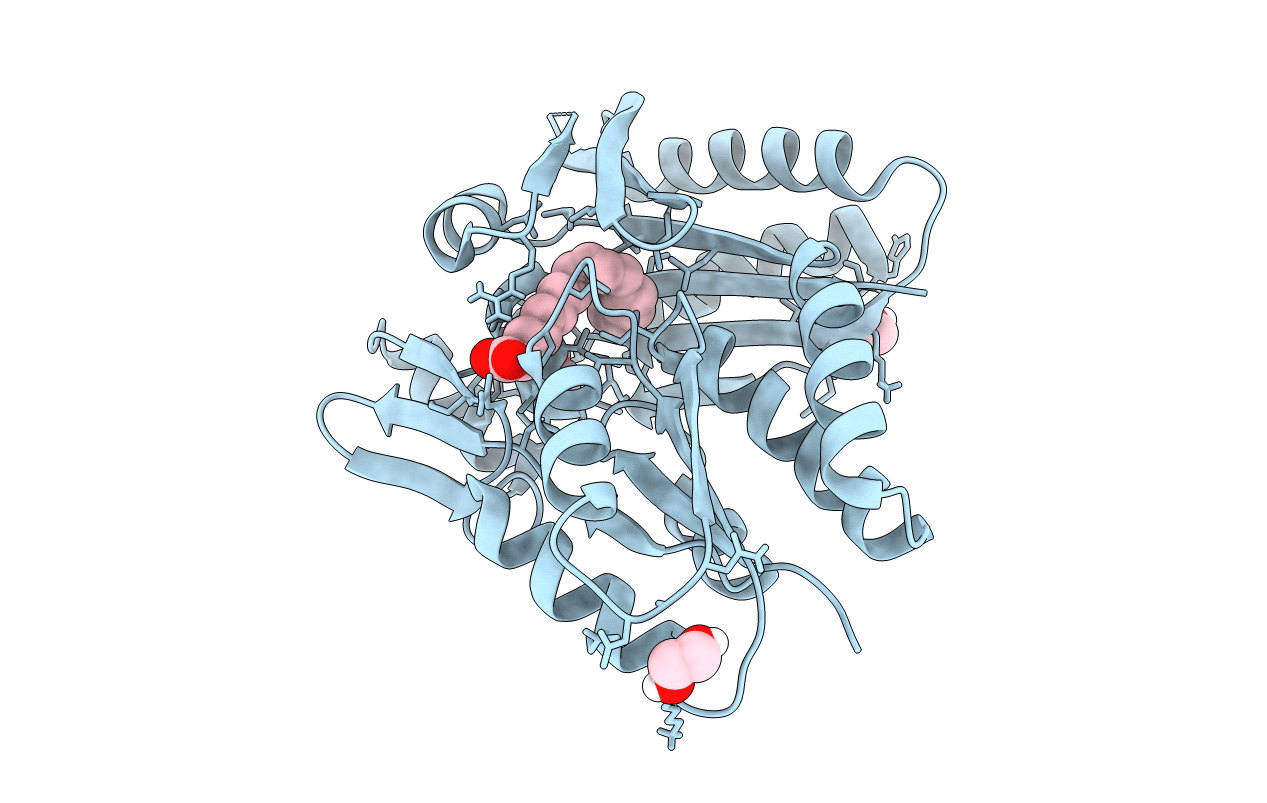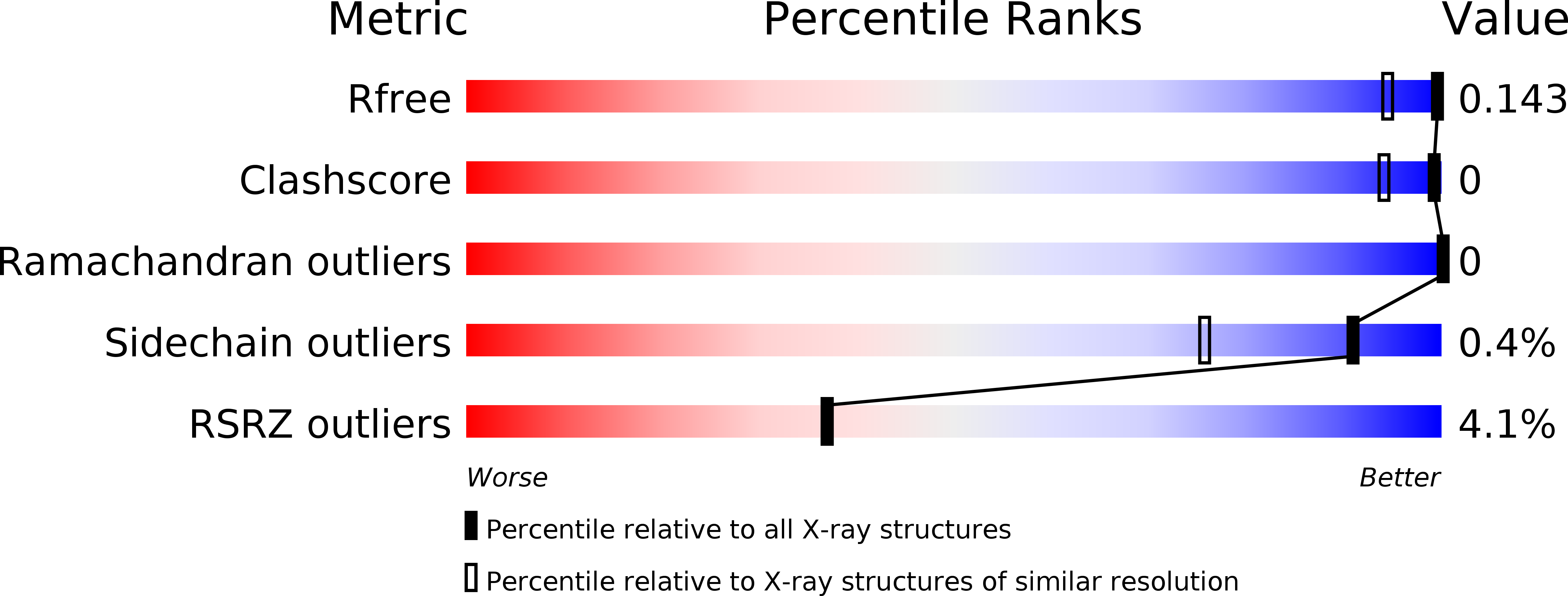
Deposition Date
2014-12-11
Release Date
2016-01-27
Last Version Date
2024-02-28
Entry Detail
PDB ID:
4X9X
Keywords:
Title:
Biochemical Roles for Conserved Residues in the Bacterial Fatty Acid Binding Protein Family
Biological Source:
Source Organism:
Staphylococcus aureus (strain MW2) (Taxon ID: 196620)
Host Organism:
Method Details:
Experimental Method:
Resolution:
1.20 Å
R-Value Free:
0.14
R-Value Work:
0.11
R-Value Observed:
0.11
Space Group:
C 1 2 1


